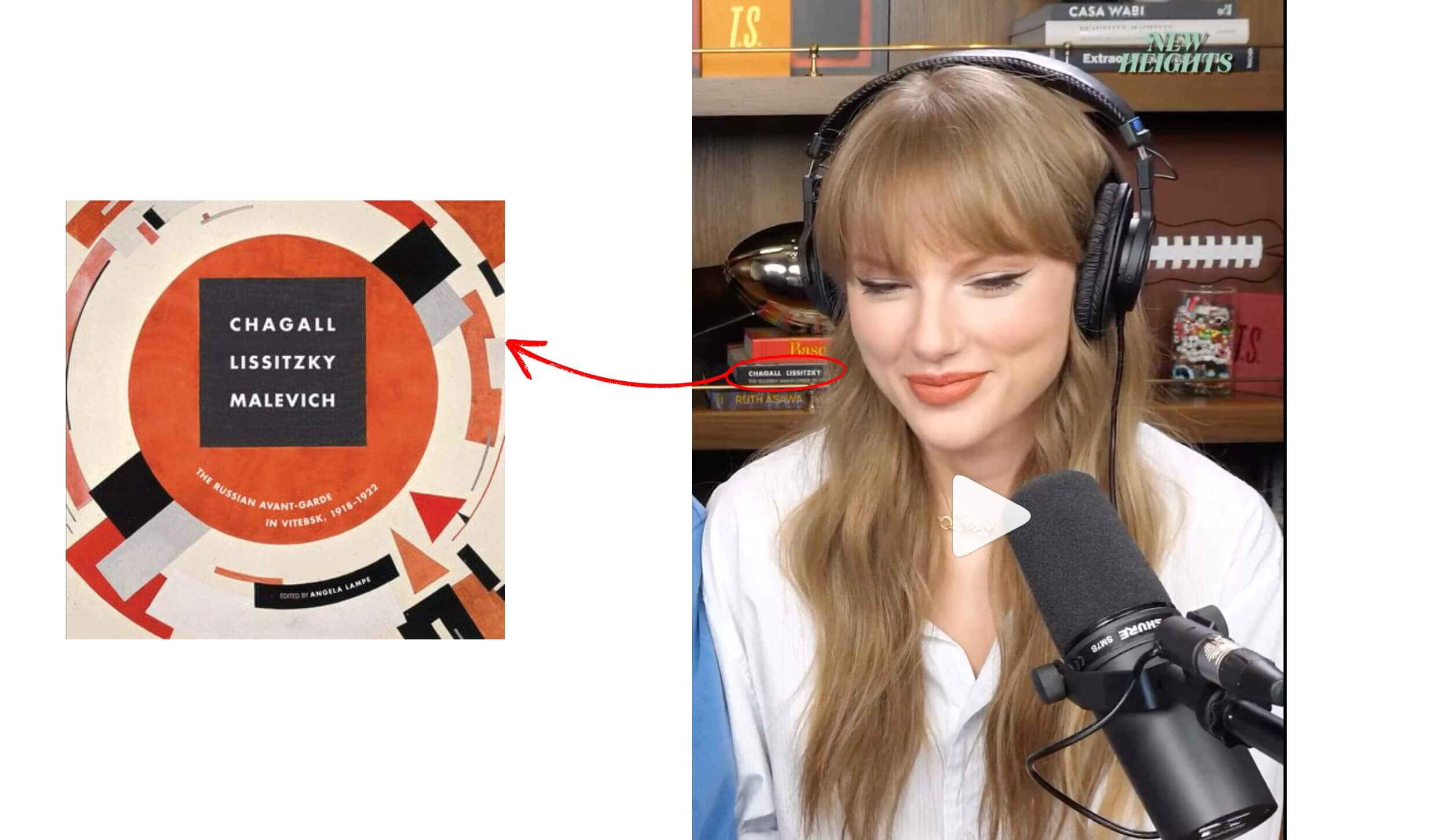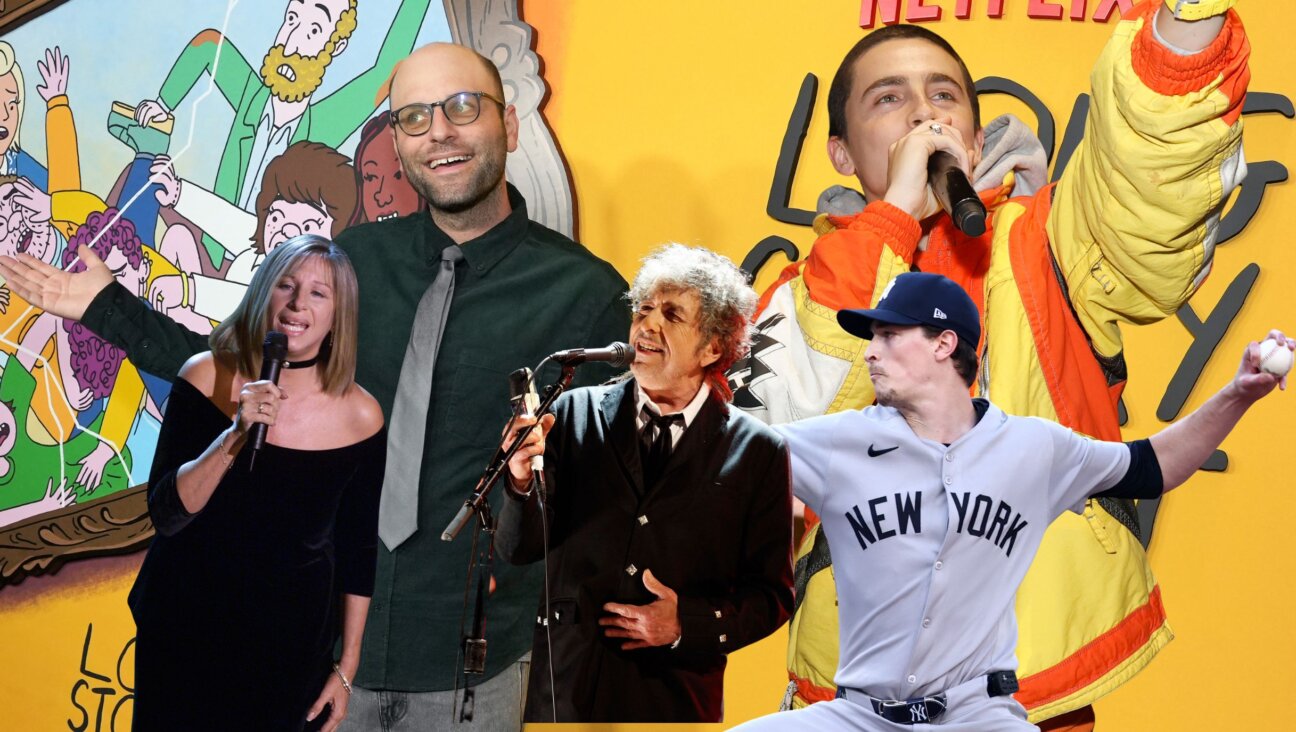Is Taylor Swift’s new album about the tortured lives of artists in communist Russia?
Facing reprobation from the leaders of Trump’s America, Swift makes reference to Marc Chagall and an earlier era of artistic suppression

Taylor Swift performs during a stop on the Eras Tour in British Columbia on Dec. 6, 2024. Photo by Kevin Winter/TAS24/Getty Images for TAS Rights Management
The fate of the famous is to be misunderstood.
It happened to the renowned Jewish painter Marc Chagall. Shortly after the Russian Revolution, he wrote that, while workers understood the dreamlike aesthetics of his new revolutionary art school, “their Communist leaders appeared to be less satisfied. Why is the cow green and why is the horse flying in the sky?”
And it happened to Taylor Swift, who once said, of the celebrity gossip mill, “If you go too far down the rabbit hole of what people think about you, it can change everything about who you are.”
Perhaps life has taught Swift, in the 13 years since she made that observation, to take some tips from Chagall, whose early enthusiasm for Russia’s communist era led first to disenchantment, then self-imposed exile. After all, if Swift wasn’t considering Chagall’s story — and what it has to say about how sociopolitical norms can stymie artists’ efforts to find creative fulfillment — why would she have filmed the announcement for her new album in front of a catalog for the 2018 Jewish Museum exhibit Chagall, Lissitzy, Malevich: The Russian Avant-Garde in Vitebsk, 1918-2022?

Swift’s 12th album will be called The Life of a Showgirl, a title hinting at the bittersweet reality of renown. An artist who is regularly subjected to social media tirades from the president of the United States — “Has anyone noticed that, since I said ‘I HATE TAYLOR SWIFT,’ she’s no longer ‘HOT?’” he posted on Truth Social in May — knows better than most that being forever on display means being forever held hostage to the intrusive expectations of anyone and everyone.
When Chagall ran up against Russia’s post-revolutionary ruling class, “hostile critics saw only a well-known artist arrogantly questioning popular taste,” wrote Angela Lampe, who curated the 2018 exhibit first at Paris’ Centre Pompidou, then the Jewish Museum. If that’s not the 1918 equivalent of being publicly declared “no longer ‘HOT,'” what is?
Sure, one might suppose that the stack of artistic catalogs behind Swift in the video — a teaser for an upcoming appearance on the podcast of her boyfriend, Travis Kelce, New Heights — was a simple matter of staging. A shelf full of thoughtfully arranged books is a universally flattering background; catalogs, in particular, convey an air of quiet sophistication.
But this is Swift, queen of the Easter egg. No detail is too small for her to layer with double meanings. She’s trained fans, throughout her career, to search all of her statements for clues. Already, internet sleuths have parsed the 13-second album announcement — a duration that is itself an Easter egg; Swifties know that 13 is her lucky number — for all kinds of signs. A jar full of friendship bracelets; a departure from Swift’s standard red lipstick; signs bearing Swift’s initials in the background — all are signals of what we should expect next.
Maybe Swift is suggesting that her album will engage directly with the difficulties experienced by artists facing oppression by the state. After all, the art book stacked beneath Chagall, Lissitzky, Malevich is about Ruth Asawa, a Japanese American who learned to draw while confined at an internment camp with her family during World War II.
Or perhaps Swift is planning to engage in an interrogation of unrealistic expectations that artists will reshape reality. El Lissitzky — another focus of the 2018 exhibition — once bragged that the suprematist artistic movement would “make the world into a true model of perfection.” Many appear to wonder why Swift has yet to achieve this end: There are endless social media posts asking why she isn’t doing more to combat President Donald Trump, advocate for Palestinians or fight climate change.
Yet Lissitzy and Kazmir Malevich, founder of the suprematism that Lissitzky so idolized, failed to perfect the world. Instead, they helped create an aesthetic language that would come to characterize much Soviet propaganda as post-revolutionary Russia descended into authoritarianism. Does Swift want us to learn from their example, and remind us, in The Life of a Showgirl, that when artists seek to influence political reality, they risk making things worse?
Or does she simply want to return to her favorite theme of reinvention? Being a showgirl means serving as the physical manifestation of an audience’s ever-changing desires, always adjusting angles to capture new light. Chagall championed, he wrote, those artistic rebels “constantly demolishing and building a new life and culture.” Swift, who once referred to herself as a “Mirrorball,” put it more simply in 2017’s “Look What You Made Me Do”: “Honey, I rose up from the dead, I do it all the time.”
















